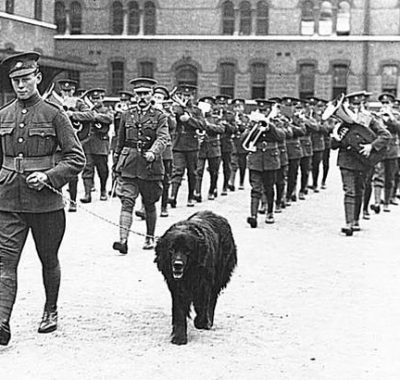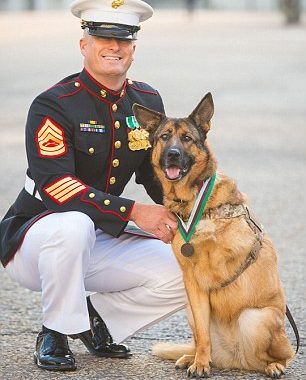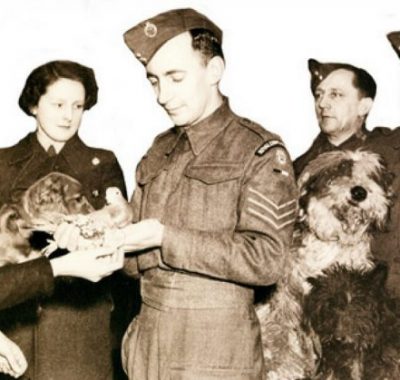On November 11th the Nova Scotia SPCA joined fellow Canadians to remember and honour the soldiers who fought and died for our freedom. We also paid tribute to the millions of animals that lost their lives in war. “We want to formally honour the bravery and service of animals in wartime,” says Nova Scotia SPCA CEO Elizabeth Murphy. “As we reflect on the sacrifices of our veterans, we will also remember the unwavering courage of animals that have stood by our veterans’ sides in times of war.”
At the national and international level, steps have been taken to officially commemorate the wartime contributions of animals. In London, the Animals in War Memorial officially opened in 2004. In 2012, the Animals in War Dedication was unveiled in Ottawa to honour animals who faithfully served alongside their human comrades. A wreath in their honour was laid during the Remembrance Day Ceremony in Ottawa. The Nova Scotia SPCA also laid a wreath in memory of the animals during Halifax Regional Municipality’s Remembrance Day Ceremony.
A wide range of furred and feathered heroes have served in times of war.
- Dogs have followed humans into war for centuries and still see active service today. They have played a significant role in scouting, tracking, rescuing soldiers and civilians, delivering messages, and in detecting dangerous gases, explosives, and land mines. Wearing specially made gas masks, dogs were even used by the Red Cross to help deliver medical supplies.
- Horses and mules have been used in almost every land battle up to the 20th century. Horses transported soldiers, ammunition, and supplies into combat. Mules were often used as stretcher-bearers, carrying wounded soldiers to safety.
- Carrier pigeons were an integral component of all armies. Before advancements in communication, they were used to deliver critical messages. An estimated 100,000 messenger pigeons served during World War I and over 200,000 during World War II. They flew through difficult weather conditions and direct gunfire to deliver life-saving information.
- Canaries were used as an early warning system to detect incoming gas and chemical attacks.
- Cats kept mice and rats from infesting warships, saving dwindling food rations and preventing disease.
- Animals have also accompanied military units as pets and mascots, providing comfort and companionship and helping to boost morale among troops.
- Even animals as small as glow-worms have been used in war, as they emit soft light that allowed soldiers to see maps and messages in the dark without alerting the enemy.
The animals of war had to persevere through terrible conditions – machine gun fire, bombs exploding, and exposure to gas and other chemicals. They were subjected to freezing temperatures in the Arctic and blazing heat in the desert. War animals endured hunger, thirst, exhaustion, as well as disease. Despite being wounded, many animals continued their work with amazing dedication, courage, and loyalty to their human comrades.
It is estimated that a staggering 9 million animals lost their lives serving in World War I alone. No one knows the true number of human lives that were saved by these animals.
Individual animals have been honoured for their wartime service. The Dickin Medal, considered the animal version of the Victoria Cross, was introduced in 1943 to recognize outstanding acts of animal bravery and devotion to duty. The medal has been awarded 71 times across the world. The recipients include 34 dogs, 32 pigeons, 4 horses, and 1 cat. Read about the 3 Canadian animal heroes that received the Dickin Medal below.

Sergeant Gander: This beautiful Newfoundland dog was honored in 2000 for his bravery, saving many Canadian soldiers during the Battle of Hong Kong in World War II. On two documented occasions, Gander’s attacks halted the enemy’s advance and protected groups of wounded soldiers. In a final act of bravery, Gander was killed in action gathering a grenade. Without Gander’s intervention, many more lives would have been lost.

Sam: This amazing German Shepherd was honored in 1998 for his outstanding gallantry while serving with the peacekeeping force’s Canadian Regiment in Bosnia-Herzegovina in April of that year. On two documented occasions, Sam displayed great courage and devotion to duty. He successfully brought down an armed man threatening the lives of civilians and soldiers. And while guarding a compound harbouring Serbian refugees, Sam held off rioters until reinforcements arrived. Sam’s valour saved the lives of many soldiers and civilians.

Beachcomber: This remarkable carrier pigeon was honoured in 1944. He arrived in Britain in August 1942 from Dieppe France, flying through hazardous conditions. Beachcomber carried a message from the Canadian army alerting commanders of their landing there, marking the start of the Dieppe Raid.
I came across a moving quotation from a Vietnam veteran – “I have often thought that worse than dying in a war is to be forgotten.” On November 11th, and every day, please remember our fallen human and animal heroes.
